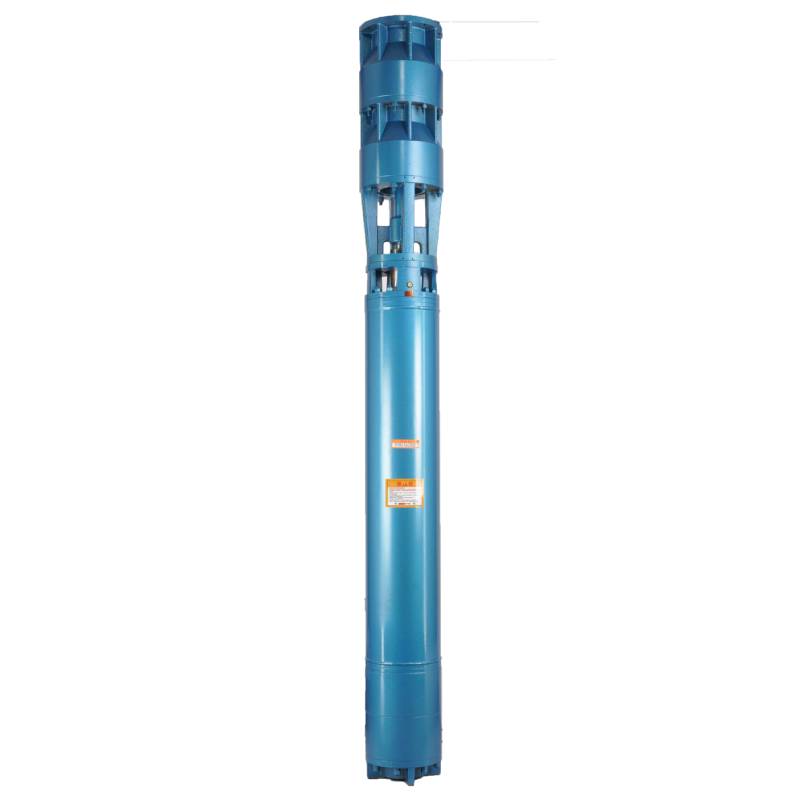Sep . 02, 2024 19:11 Back to list
multistage submersible pump
Multistage Submersible Pumps An Overview
In the realm of water management and industrial applications, multistage submersible pumps stand out for their efficiency, reliability, and adaptability. These pumps are designed to operate submerged in water, making them ideal for applications that require lifting water from deep wells or boreholes. Unlike conventional pumps, multistage submersible pumps incorporate multiple impellers stacked in series, allowing them to generate higher pressures and flow rates.
How Multistage Submersible Pumps Work
The fundamental operational principle of a multistage submersible pump involves the conversion of mechanical energy into hydraulic energy. When the motor turns the impellers, water is drawn into the pump through the inlet. As the impeller spins, it imparts kinetic energy to the water, pushing it away from the pump. This kinetic energy is then converted into pressure as the water moves through each subsequent stage, each containing its own impeller and diffuser. The cumulative effect of several stages allows the pump to deliver water at high pressures, making it suitable for lifting water from significant depths.
Applications of Multistage Submersible Pumps
Multistage submersible pumps are employed in various applications across different sectors. In agriculture, they are essential for irrigation, effectively drawing groundwater for crop cultivation. In municipal water supply systems, these pumps ensure that water is delivered from deep aquifers to treatment facilities and distribution networks. Additionally, multistage submersible pumps are widely used in mining operations, where they facilitate dewatering and fluid transfer in challenging environments.
multistage submersible pump

Advantages of Multistage Submersible Pumps
One of the primary advantages of multistage submersible pumps is their ability to achieve high flow rates and discharge heads, which makes them more efficient than single-stage pumps, especially in high-demand situations. Their design allows for smooth and continuous operation, minimizing the risk of cavitation and wear, ultimately leading to a longer service life. Furthermore, being submersible means they are less prone to overheating and can operate quietly without the noise typically associated with surface-mounted pumps.
Considerations for Selection and Maintenance
When selecting a multistage submersible pump, it is crucial to consider several factors, including the depth of the water source, required flow rate, and total dynamic head (TDH). Proper sizing ensures optimal performance and longevity of the pump. Regular maintenance is also essential to ensure efficient operation. This includes checking for wear and tear on impellers, inspecting seals, and cleaning the pump to prevent clogging from sediments.
Conclusion
Multistage submersible pumps represent a vital technology in modern water management. Their ability to efficiently lift water from deep sources makes them indispensable across various industries, from agriculture to municipal services and mining. By understanding their operation, applications, and maintenance needs, users can harness the full potential of these pumps, ensuring a steady and reliable water supply wherever it is needed. As water scarcity becomes an increasingly pressing issue globally, the importance of such technologies cannot be overstated, making multistage submersible pumps a crucial asset in sustainable resource management.
-
Submersible Water Pump: The Efficient 'Power Pioneer' of the Underwater World
NewsJul.01,2025
-
Submersible Pond Pump: The Hidden Guardian of Water Landscape Ecology
NewsJul.01,2025
-
Stainless Well Pump: A Reliable and Durable Pumping Main Force
NewsJul.01,2025
-
Stainless Steel Submersible Pump: An Efficient and Versatile Tool for Underwater Operations
NewsJul.01,2025
-
Deep Well Submersible Pump: An Efficient 'Sucker' of Groundwater Sources
NewsJul.01,2025
-
Deep Water Well Pump: An Efficient 'Sucker' of Groundwater Sources
NewsJul.01,2025
-
 Submersible Water Pump: The Efficient 'Power Pioneer' of the Underwater WorldIn the field of hydraulic equipment, the Submersible Water Pump has become the core equipment for underwater operations and water resource transportation due to its unique design and excellent performance.Detail
Submersible Water Pump: The Efficient 'Power Pioneer' of the Underwater WorldIn the field of hydraulic equipment, the Submersible Water Pump has become the core equipment for underwater operations and water resource transportation due to its unique design and excellent performance.Detail -
 Submersible Pond Pump: The Hidden Guardian of Water Landscape EcologyIn courtyard landscapes, ecological ponds, and even small-scale water conservancy projects, there is a silent yet indispensable equipment - the Submersible Pond Pump.Detail
Submersible Pond Pump: The Hidden Guardian of Water Landscape EcologyIn courtyard landscapes, ecological ponds, and even small-scale water conservancy projects, there is a silent yet indispensable equipment - the Submersible Pond Pump.Detail -
 Stainless Well Pump: A Reliable and Durable Pumping Main ForceIn the field of water resource transportation, Stainless Well Pump has become the core equipment for various pumping scenarios with its excellent performance and reliable quality.Detail
Stainless Well Pump: A Reliable and Durable Pumping Main ForceIn the field of water resource transportation, Stainless Well Pump has become the core equipment for various pumping scenarios with its excellent performance and reliable quality.Detail
